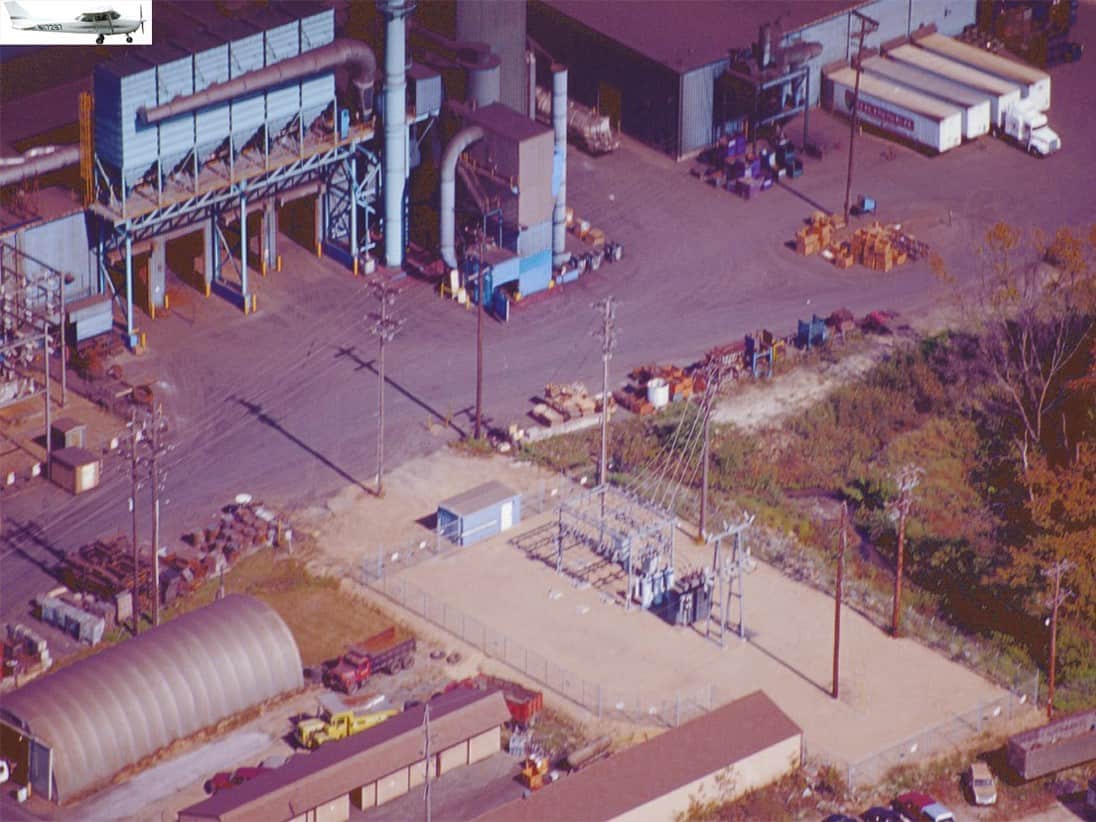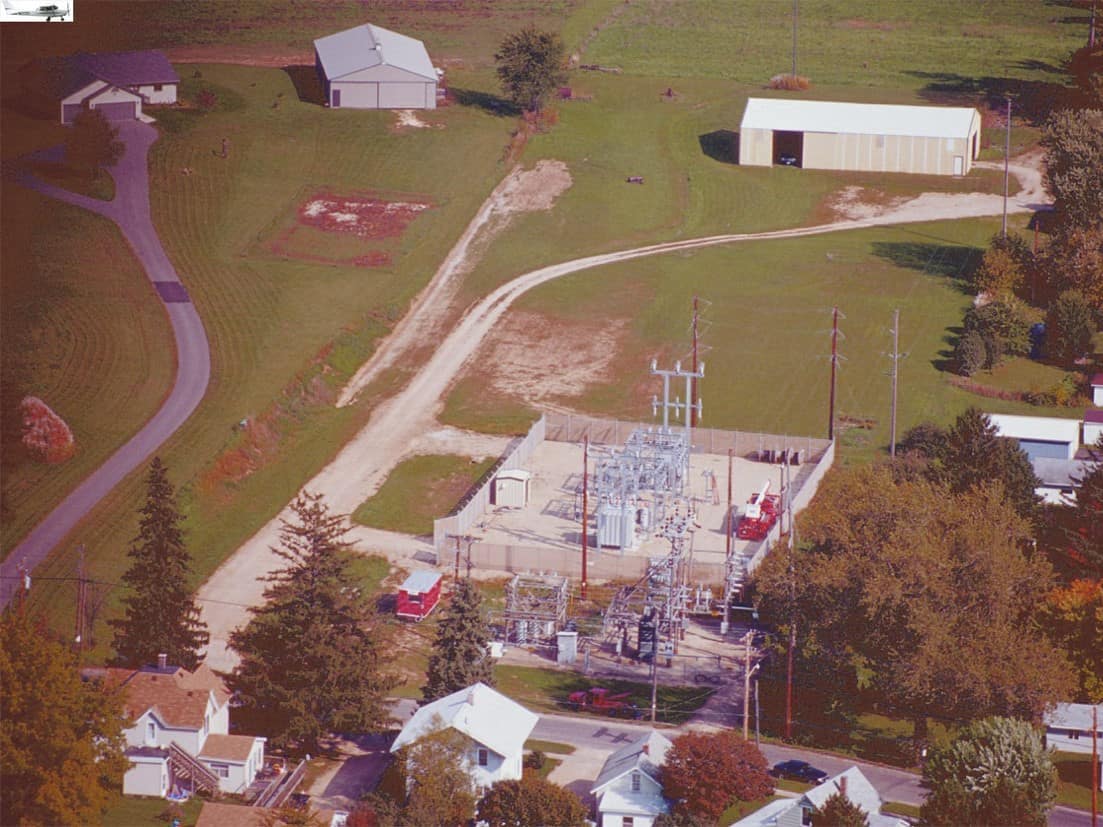Tap into our decades of knowledge on our substation and grid design. We help municipal utilities create the infrastructure to support your future population and industry needs. Rely on our experience to help you identify solutions to your challenges.
Electrical Distribution System Reviews
A typical system review includes an analysis of existing conditions (i.e., a physical checkup) of an electrical system. Capacity, loading, and the condition of each major component of the distribution system are examined. The review will include bulk power supply, substation equipment, and three-phase distribution feeders. Operation and construction concerns are discussed. The review will outline known system deficiencies and may require follow-up with one or all of the following items.
Load Forecasting
In order to plan for additional capacity requirements of a distribution system, an estimate of electrical loads is created and projected over a ten-year period. Municipal planning, input by utility personnel, and comparisons with similar electrical systems are used to predict future loads, establish a benchmark for future growth, and determine when action will be required.
Contingency Planning
Reliable distribution system planning allows for any one component of a system to be removed from service at a time of peak load. The ability to transfer loads under each contingency is examined to identify constraints and to prioritize construction recommendations. A switching procedure can be prepared for utility personnel to use when switching equipment in and out of service for scheduled maintenance.
Long Range Plans
A long range plan begins with the end result in mind. A ten-year plan will help to confidently plan for the next two years. Load forecasting, locations of potential growth, the age and condition of equipment, and capacity limitations identified in the contingency planning are used to identify what and when future construction is anticipated. With the goal of keeping rates competitive, decisions regarding the maintenance, replacement, and addition of equipment items are more easily scrutinized. Long range plans are periodically reviewed during the ten-year period and activity is documented for potential updating of the plan.
Short Range Work Plans and Budgets
Recommended construction is prioritized by highest impact, the greatest need, and affordability. A two- to three–year construction budget and cash flow analysis will help determine borrowing or rate impacts. Supporting documentation can be used to submit applications, when regulatory approval is required, and to begin the design phase when project approval is accomplished.
Feasibility Studies
Feasibility studies answer the “can I” or “what if” questions. They usually consider proposed additions of large loads or generation, and employ engineering analysis and cost estimating to evaluate power quality and affordability.
Best Value Plan Analysis
There is often more than one good way to accomplish the same thing. When considering potential solutions, alternate plans may be identified and outlined (with a cost estimate of each plan) to meet the immediate and future needs of a system. Some plans may involve a combination of transmission and distribution construction, which will require planning and collaboration with other utilities. The cost/benefit ratio of each plan is considered and compared. Based on estimated cost and value received, a recommended best value plan will be selected, affected parties will reach a consensus, and the recommended plan will be accepted or revised accordingly.
Equipment Maintenance
An equipment maintenance plan will include documentation of the major equipment and controls on a distribution system, and instruction and maintenance manuals for each item. A recommended maintenance schedule will outline the testing and routine maintenance work that should periodically be performed to extend the life and performance of your electrical system.
Electrical Distribution and Transmission Line Design
Forster Electrical Engineering is experienced in the design, construction, and operation of high voltage power lines. We will work with you to select a route for the line, obtain the required permits, design the line, prepare bidding documents (plans, specifications, and material lists) for construction, assist in the bidding process, and supervise construction to final checkout of the facility.
Surveying and Staking of Overhead and Underground Electrical Lines
Our experienced team will survey the existing facilities along a proposed line route and stake overhead and underground distribution lines for construction.
Sag and Tension Specifications and Wire Stringing Charts
As a part of the overhead line design, we prepare conductor sag and tension specifications using ALCOA Sag10 software. Wire stringing charts are prepared for the construction of overhead lines based on design requirements for each line section.
Plan and Profile Drawings for New and Existing Electrical Facilities
We will prepare plan and profile drawings necessary for the design and construction of overhead distribution lines. Vertical clearances, uplift, and electrical layouts will be verified. Plan drawings are imported from field surveyed data.
Easement Acquisition Assistance
Distribution line routes may require an easement be granted to the utility for access and maintenance. We will prepare easement location drawings and provide assistance in preparing applications for easement acquisition.
Road Right-of-Way and Regulatory Permit Acquisitions
Where overhead or underground line routes encroach a road right-of-way, we obtain regulatory right-of-way permits prior to construction from state, county, and local entities.
Customer Contact and Tree Trimming Permission
Portions of overhead line routes may require tree trimming. We will contact customers along the line route to explain the design and to obtain a tree trimming permit, if required, prior to trimming.
Joint Use Pole Attachment Structural Loading and Clearance Analysis
As communications utilities add equipment to existing or new overhead power lines, we will verify the pole structural loading meets NESC requirements on different grades of construction, and analyze if adequate code clearances are maintained. We will determine if your pole line is adequate to accommodate additional facilities and make recommendations to upgrade poles classes, where needed, to meet NESC structural loading requirements.
Line Staking Seminars and Training for Utility Employees
We present line staking seminars to linemen, staking technicians, and engineers with valuable training for the safe, reliable, and efficient design of overhead distribution lines. We offer methods on how to apply NESC rules in your line designs. We will provide your employees with on-site and in-the-field training.
Sectionalizing and Switching Automation
With service reliability expectations continuing to rise, we will develop distribution automation solutions to meet your system requirements, minimize outage durations, and maintain a high level of service continuity to utility customers.
Supervisory Control and Data Acquisition (SCADA) System Design
Forster Electrical Engineering will plan, design, and procure hardware to meet the specific SCADA requirements for your electrical system.
Distributed Generation Interconnection Analysis and Design
We process distributed generation (DG) applications on distributed generation projects such as photovoltaic, methane digesters, wind turbines, and hydro turbines. Power quality concerns are addressed to analyze the effects on the distribution system of interconnecting the DG. We will design the DG interconnection to ensure reliable and safe electrical service to the DG owner and the utility.
Marina Electrical System Design
Forster Electrical Engineering has designed electrical power distribution to over 10,000 boat slips throughout the country.
Wastewater Treatment Facility Electrical Distribution Design
Working with other civil engineering firms, we design power distribution systems for wastewater treatment facilities, water treatment plants, pumping stations, lift stations, and landfills. We understand the unique design required for the types of loads and corrosive or hazardous conditions of these installations.
High Power/Low Voltage System Design
When an architectural or consulting client has a project that involves a high power/low voltage service entrance or coordination with a power supplier, we will make this part of the project successful. We work with industrial clients on unique and one-of-a-kind designs for systems that range from 10,000 HP, variable-speed drives to large substations for specialized test facilities.
Institutional or Industrial Electrical System Design
We’ve designed numerous electrical facilities for public institutions and industrial facilities. The types of projects include:
- Switchgear design low voltage (480V) and medium voltage (4,160 V—13,800V).
- Motor control center installation and replacement.
- Generator additions and retrofits, diesel or natural gas, on-line or standby.
- Heating plant/power plant upgrades and remodels.
- Code compliance and facility renovation.
Outdoor Lighting Design
We work closely with other engineering disciplines on outdoor lighting electrical systems that include roadways, athletic fields, parking lots, walkways, and marinas. We will assist with fixture selection, calculate point-to-point lumens to comply with lighting standards, coordinate the utility service, design the lighting control system, and size the supply conductors for voltage drop.
GIS
GIS mapping can be a useful tool for designing electric lines and managing assets of an electrical system. Our involvement includes listening to needs and long term goals prior to implementing a full GIS mapping system and GIS asset management. GIS technology in managing an electrical distribution system facilitates easier planning, faster and more accurate electrical design, and up-to-date record data.



